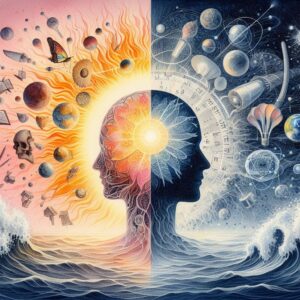Today is my first day back from an annual yoga retreat in which we (six yoginis) diagnosed and designed a weekend experience to suit our current development and growth needs. We used the 5 Koshas as a conceptual model to frame our transformational experience. To summarize our shared adventure, one of my cohorts stated, “This was a once-in-a-lifetime experience.” IMHO, when people come together with pure intention, miracles happen while truth, beauty and goodness prevail. And, who doesn’t want truth, beauty and goodness to be life companions.
I am always searching for DIY tools to enhance my learning, and yoga never fails to provide. In yoga philosophy, the koshas are increasingly deeper layers (sheaths of being) housed within our bodies which, when integrated, provide us with mind-body-spirit wellness.
Our outermost layer is our physical sheath (Annamaya Kosha) where we strengthen and stretch bones, muscles and tissues in order to enhance our stability. A regular asana (pose) practice grows our physical awareness, strength and flexibility. Furthermore, the physical container of our body provides us with sensory clues that enhance our adaptability and sustained survival. Taking healthy and helpful action amounts to movement with intelligence which is why we must first listen to our body’s cellular intelligence. As B.K.S. Iyengar taught, “the body must tell one what to do, not the brain.” Hence, why the linear evolution of any experience proceeds with sensation, and is then followed by emotion and finally, thought.
Layered just under the physical sheath of the body is what pervades and animates our entire organism — Pranamaya Kosha. We recognize it as breath, and breath carries life force (prana) that enhances our energetic and organic vitality. Prana is the energy of the universe and includes all vibration — heat, light, gravity, magnetism, electricity, spirit, etc. In our own bodies, deep even breathing of prana allows us to quiet the anxious mind and body while at the same time alleviate depression. Increasing our energy (prana) allows us to recharge our batteries by relaxing our brain (calming our emotions) and sending awareness (intelligence) into all the cells in our body. In essence, and with time, this practice frees us from fear and attachment.
Our next sheath — Manamaya Kosha — constitutes our mental body and serves to bring us intellectual clarity. Although one of my yogini group is strongly oriented in her body, most of us (just as in Western society) tend to be mind-oriented. The primary purpose of yoga is to still the mental movements and fluctuations — mindless chatter, dislikes, doubts, fears, desires, jealousies — that disturb or interrupt our ability to stay self-aware (conscious). These mental disturbances are the cause of all our suffering. Whether good, bad or ugly, all behaviour is dependent on our thoughts. Therefore, it is wise to remember that our minds (i.e., thoughts) are not our intelligence and instead are the CPUs (central processing units) that sift, sort and store data. Overtime, mindful meditation quiets our conditioned, often controlling, thoughts and ego so discernment and insight (wisdom) can be heard, experienced and enacted.
Our fourth layer is our intelligence sheath — Vijnanamaya Kosha — from which discernment and insight (intuition) evolve into wisdom. Wise people have learned to pacify their mental disturbances (negative conditioning) and allow their present moment awareness and intuition (knowing) to be their guide into the unknown. By linking awareness to discerning intelligence, we see the world with absolute honesty. Studying and practicing spiritual values (yamas and nyamas) refines our self-control (mastery over mind and ego). As Iyengar writes, “When the mind is controlled and still, what remains is the soul.” Glimpsing this tranquil, alert, egoless essence guides us into wise loving action.
Finally, our fifth innermost sheath — Anandamaya Kosha — exists at our core where our soul nests in a blissful union with the universe. Even though we live physically as human beings, we have an individual soul through which we communicate with the universal soul. Although, the human aspect of self is impermanent — the body dies — the soul is permanent and the basis of our true identity. Here is where, once we’ve come to know all our aspects, we discover our authentic self. Thus, to identify with only our human aspect is to believe there is no firm ground; no certainty in the form of permanence. One’s soul (authentic self) is one’s certainty or permanent foundation. For millennia, human beings have sought certainty in the form of immortality outside themselves in the physical world when in actuality permanence abides within the eternal unchanging self.
Discover the unknown, and you will encounter your own immortality. B.K.S. Iyengar, Light on Life
Binding our identity to a physical impermanent body prohibits us from knowing who we truly are and entering into a state of oneness (bliss) with all that exists, and thereby freeing ourselves of all suffering. At the level of the soul, our spiritual values, based firmly in truth, provide the endurance and certainty needed to withstand whatever life throws at us.
So, let me activate your inner wisdom by asking you, “Which sheath or kosha is where you are currently strongest?” Which kosha(s), by strengthening them, would bring you to a more balanced healthy state?”
For more on mind-body-spirit wellness, click here.





